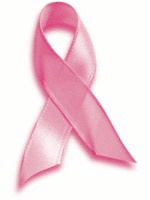 In October 2015, new breast cancer screening guidelines were published by the American Cancer Society. At the time, we were halfway through the publishing process for our new book. We immediately threw on the breaks and started all over again in order to rewrite the chapter on breast cancer. Even though the ACS is one of several organizations that propose breast cancer screening recommendations, their recent data provides strong evidence that screening too early for breast cancer can do more harm than good.
In October 2015, new breast cancer screening guidelines were published by the American Cancer Society. At the time, we were halfway through the publishing process for our new book. We immediately threw on the breaks and started all over again in order to rewrite the chapter on breast cancer. Even though the ACS is one of several organizations that propose breast cancer screening recommendations, their recent data provides strong evidence that screening too early for breast cancer can do more harm than good.
It may seem like a minor change to have pushed back the starting date for mammograms from 40 years of age (the previous recommendation) to 45 years of age, along with decreasing the frequency of exams after age 54, but the change represents a significant shift in how doctors are approaching early breast cancer detection. [1]
Most people are not aware that 1 in 8 women will develop breast cancer over the course of their lifetimes, and are unfamiliar with the progression of the disease. Breast cancer is a serious life-threatening condition, though the difference in life expectancy between early-detection and late-detection can be enormous. Finding breast cancer early is key… but doctors and medical data have often disagreed on the best way to do it.
While many doctors still recommend breast self-exams, and perform breast exams in the clinic, there is no longer scientific consensus that these tests are effective at detecting early cancers. I’ll be discussing the reasons behind this in a future post, but for now it’s important to understand that the most important and accurate test for breast cancer remains the mammography.
There are several reasons for these changes in recommendations. The most significant is that while mammograms are reasonably accurate tests, they do sometimes result in false positives, and the test performs poorly in young women. The younger you are, the less likely you are to have breast cancer, and the more likely you are to have a false positive test. New research has shown that a large percentage of positive mammograms performed on young women are false positives, and a relatively low frequency represent actual cancers. [2]
A false positive can result in enormous amounts of stress and mental anguish, as well as medical costs, time, and invasive procedures. Unless you are a high-risk individual (in which case starting your screening early is advised – speak to your doctor about this), pushing back the screening start-date should help alleviate the frequency of these false positives while continuing to detect early and potentially fatal cancers.
A review of the new guidelines for women of average risk follows, from the American Cancer Society’s website:
- Women with an average risk of breast cancer – most women – should begin yearly mammograms at age 45.
- Women should be able to start the screening as early as age 40, if they want to. It’s a good idea to start talking to your health care provider at age 40 about when you should begin screening.
- At age 55, women should have mammograms every other year – though women who want to keep having yearly mammograms should be able to do so.
- Regular mammograms should continue for as long as a woman is in good health.
- Breast exams, either from a medical provider or self-exams, are no longer recommended.
It’s important to keep abreast of changing screening recommendations, especially with something as common and potentially deadly as breast cancer!